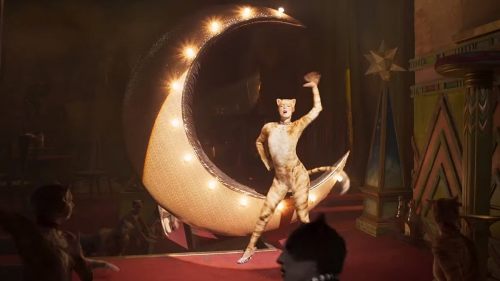FAST COLOR Review: Superpowers Steeped In Heritage
Rooted in a story of expressive curiosity and the bonds formed through heritage, Julia Hart’s Fast Color is reminiscent of recent, intimate super hero films that interrogate the nature of power and legacy. The wide, sparse Midwest of its dry dystopian setting mirrors the empty Midwest of Rian Johnson’s Looper, as does the telekinetic powers of its characters. The negative potential of emotional conflict on the main character’s powers, and the resultant outward harm that conflict causes, is not unlike Patrick Stewart’s performance as a worn-down, mentally deteriorating Charles Xavier in James Mangold’s Logan. And though Fast Color is definitely a welcome addition to a developing, subtler sub-category of superhero films that are more concerned with the personal than they are larger-than-life conflicts, the movie sets itself apart with a story that focuses on, and encourages, the cultural and familial heritage of three Black women in a small town, and the warm but complex history of their family home.
Presumably set in the near future, Fast Color takes place in a US suffering through a multi-year drought. We first follow Ruth (Gugu Mbatha-Raw) as a lone traveler whose random seizures, triggered by fractured memories, cause literal earthquakes. She never stays in one place for long, especially since the police, and Bill (Christopher Denham) – an unsettling government scientist interested in testing her abilities – are close on her trail. Ruth, however, is a resourceful and self-preserving traveler, and she eventually reaches her destination: home.
Specifically, the house Ruth left as a rebellious teenager, where the women of Ruth’s family have grown up for generations. Ruth left her daughter Lila (Saniyya Sidney), and mother, Bo (Lorraine Toussaint), behind when she went off on her own. And as the three deal with the emotional ramifications of Ruth’s return, Fast Color evokes the frustration, love, and concern through ruminative, caring performances, and a thoughtful script by Julia Hart and Jordan Horrowitz that prioritizes the whirlwind of desires and needs within each woman, and the curious ways that their experiences shadow one another.
In a loving introduction that shows thoughtful collaboration between production designer Gae S. Buckley and cinematographer Michael Fimognari, Hart sweeps through that home and the history it evokes: stacks of books and bookshelves, paintings, Lila’s doodles and drawings on the cabinets and lower walls, photographs of the generations of women who’ve lived at the house before. Each room feels lived-in and significant, and as Ruth reinserts herself into the lives of her mother and daughter, the history of the home, and of their family’s particular talent, influences their attempts to reconnect with one another.
Ruth’s family is gifted with the ability to see “The Colors”, bonds that connect objects and phenomena within the world. When they act upon this perception, their powers manifest as a kind of telekinesis that allows them to deconstruct, manipulate, and reconstruct objects. Hart’s visualization of these powers are elegant, as the colorful particles of the given objects swirl and flow in the air. The models made by these displays suggest a beauty and art to their abilities that contrasts with the more destructive nature of Ruth’s seizures.
The legacy of their powers are intimately tied to Ruth’s uncontrolled destructive seizures, so Ruth, Bo and Lila investigate their own history via a journal of the women who came before them, as well as through their gradual reacquaintance with each other. The structure of the story, reliant on an exploration of a shared family heritage, is also reflective of a larger artistic heritage of works in literature by Black women that uses extra-sensory abilities within socially stressful or dystopic confines to dramatize the unbalanced reality of social pressure and oppression on Black women.
Toni Morrison’s Beloved explored the psychological and emotional stressors of slavery on a mother and her daughters, within a home supernaturally haunted by a death unique to the confines of slavery. The protagonist of Octavia Butler’s Parable of the Sower, Lauren, has hyperempathy – a condition that transfers the pain of others to the Lauren herself – which is passed onto her from her drug-addicted mother, suggesting the weight of Black women’s heritage, and necessitating increasing caution and thoughtfulness as she tries to survive travelling through a violent American dystopia. In these works, extra-sensory abilities are extensions of the significance of emotional history, and suggest the impact of experience and trauma on coming generations. They use powers very specific to the social experiences of Black women, emphasizing abilities that draw from the characters’ emotional health and humanity.
“The Colors” of Fast Color operate in a similar way, although there is more expression of strength and agency in the trio’s manipulation of The Colors, even despite Ruth’s trouble. But as outside forces attempt to utilize Ruth’s, Bo’s, and Lila’s abilities without equitable consideration for their well-being, the film reflects our society’s history of using Black women and the significance of their cultural experiences without also ensuring their safety, support, and security.
The performances of the lead actresses give weight to the story’s implication of mirrored experiences and feelings between the characters. There’s a tension borne out of the shared independent natures of this family, and a subcurrent of recognition that the impulses of curiosity conflict with a need for self-preservation. That tension is felt more in the quiet, measured moments as the characters carefully reveal certain parts of themselves to each other, than it does in a few exposition heavy scenes. But even when there’s a lot of expository dialogue, Hart balances it with visuals that emphasize the wonder of the characters’ powers, and the significance of their memories.
Because Fast Color is so concerned with the relationships of Ruth, Bo, and Lila, the few other characters aren’t given a lot of attention. There’s a sheriff searching for Ruth whose relationship to the family never quite feels as fleshed out as it could. And the looming threat of the scientist Bill, and the government forces he works for, never actually comes off as threatening as you’d expect it to. But maybe part of the point is that centering the emotional journey of these Black mothers and daughters is more important, and more interesting, than the male-centered threats that films about power tend to focus on.



